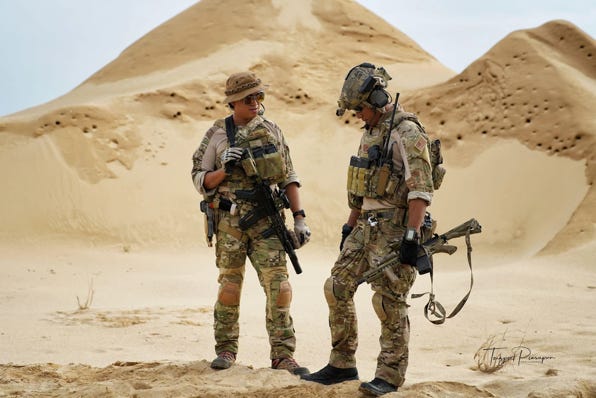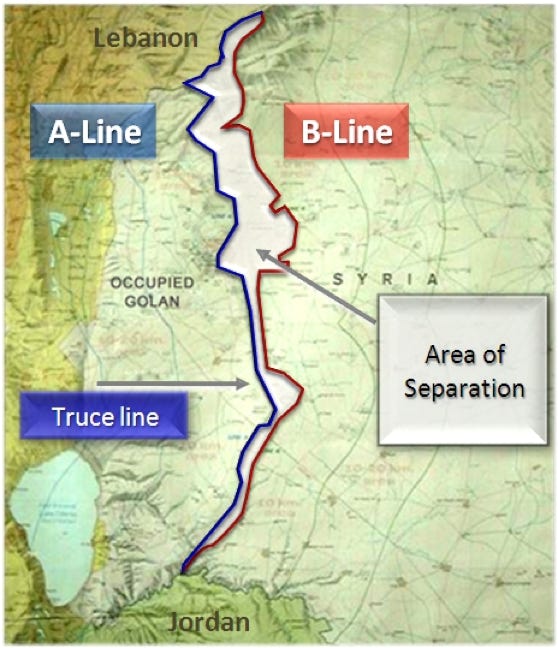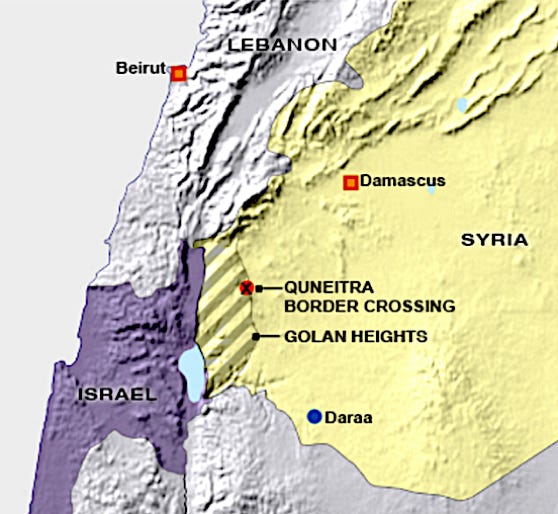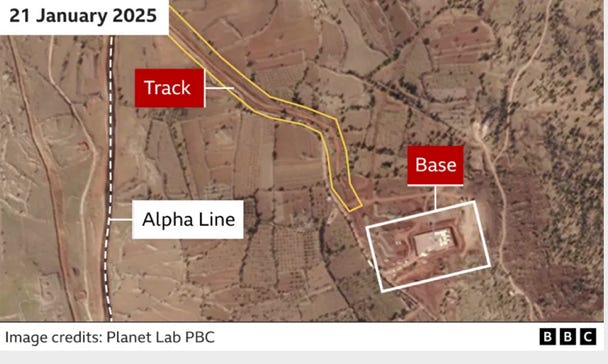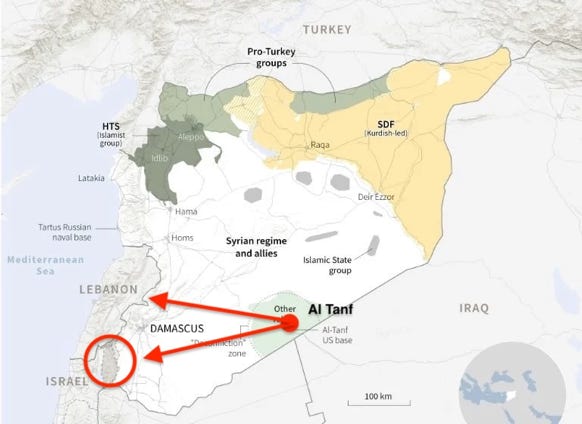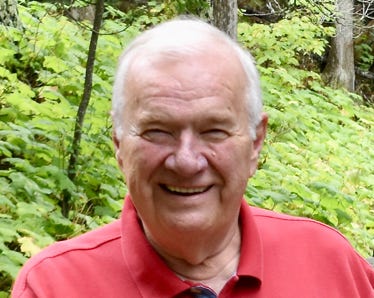DUTY, HONOR, COURAGE, RESILIANCE
Talking Proud: Service & Sacrifice
Syria: A fractured state
Venture into the unfamiliar
The matter of Israel
Syria and Israel have been at war since they were both established in the 1940s. Britannica highlights the First Arab-Israeli War in 1948, the Six-Day War in 1967, and the Egypt-Syria Yom Kippur War of 1973. The New York Times adds the Bekaa Valley War of 1982.
The American Jewish Committee (AJC) has reminded the world that Hayat Tahrir al-Sham (HTS), the group overthrowing Bashar Assad in Syria in December 2024, is a terrorist group rebranded from the al-Nusra Front, an al-Qaeda linked organization. The AJC has commented,
“Recent rebel offensives against the Assad regime in Syria reflect a convergence of regional instability and shifting geopolitical priorities … The civil war in Syria has long presented a complex challenge for Israel, intertwining historical conflicts, territorial disputes, and evolving security threats.”
The AJC highlights these points,
- Syria is allied with Iran and Hezbollah, which affects Israel’s national security.
- Syria provides a corridor for Iranian influence and weapons transfers to Hezbollah.
- IDF launched a pre-emptive air campaign against Syria’s military resources as soon as the Assad regime fell, a move to prevent these resources from falling into hostile hands.
Following the end of the Yom Kippur War in 1974, the United Nations created a United Nations Disengagement Observer Force (UNDOF) with an authorized strength of 1,250. The UNDOF's mission is to patrol a buffer zone between Syria and Israel in the Golan Heights area. This buffer zone was intended to prevent outbreaks of hostilities between Syria and Israel. The UNDOF mandate is renewed every six months. It is still there.
The buffer zone is a demilitarized zone. Israel is not to cross the A Line, and Syria is not to cross the B Line. Wikipedia has written, “UNDOF is deployed within and close to the zone with two base camps, 44 permanently manned positions and 11 observation posts.”
In December 2024, after the fall of Assad, Israel sent the IDF into the Golan Heights Buffer Zone. The Israeli intent is to control the buffer zone and use it as a defensive position.
UNDOF has informed Israel that it has violated the 1974 disengagement agreement. The Israeli leadership countered by saying they had to occupy this zone to prevent another October 7 scenario from developing.
The Israeli leadership has taken heat for this military move. However, the Israelis know that in August 2014, the al-Nusrah Front allied to al-Qaeda seized control of the Golan Heights crossing to Israel in Syria’s southwest Quineitra Province.
Israel captured the Golan Heights in the 1967 Six-Day War, has held it since, and has declared Israeli sovereignty over it, in effect, an annexation. There are said to be about 30,000 Israelis living in the Golan Heights, outside the buffer zone. There are Arab villages inside the buffer zone.
Hadeel Al-Shalchi reported for NPR in January 2025 that the IDF had entered the villages and was confiscating weapons. The villagers do not want to live under Israeli rule. BBC reported in January 2025,
“Newly released satellite imagery shows Israel Defense Force construction taking place within the demilitarised buffer zone that separates it from Syria.”
Israel says the incursion is temporary, though I have seen evidence the Israelis intend to expand their settlements in the Golan, which could cause the IDF to remain in the buffer zone.
Israel is concerned that jihadist groups could attack Israeli settlements in the Golan and that the new HTS “sheriff in Damascus” might supply the jihadists with weapons.
Assaf Orion has written for the Washington Institute for Near East Policy that Israel’s main objectives in Syria are:
- “Protecting its residents and sovereignty;
- “Repelling hostile actors from its borders
- “Preventing strategic weapons from falling into extremist hands;
- “Strengthening Jordan’s stability;
- “Preventing the re-establishment of Iranian and proxy supply lines to Hezbollah and other actors;
- “Countering any local resurgence by the Islamic State or other Sunni jihadist terrorist organizations;
- “And last but not least, ensuring that Israel maintains sufficient freedom of action to defend itself and remove any threats in the region, from the Levant to Iran—unilaterally if necessary, but preferably in cooperation with others.”
The Al-Tanf US military garrison is about 160 miles east of the buffer zone, separated by the Badia, a vast, hot, arid, sparsely inhabited desert.
The good news for Israel is that Al-Tanf is well-positioned to delay and degrade Iranian proxies from moving against the Golan. The bad news is that the area between Al-Tanf and the Golan is an expansive desert that IS knows how to use as a staging area. IS has stored weapons in the Badia, established training camps, and safe houses. IS has operated from here before, most notably in the ancient city of Palmyra, which its jihadists had virtually destroyed.
The fall of Assad has given IS an opportunity to seize weapons stockpiles and reconstitute in central Syria. Assad’s fall was sudden, which has created disorganization in Damascus and elsewhere sufficient to enable IS to reactivate.
Leila Molana-Allen has described the Badia as a deadly area, one which IS controlled for several years. Its terrain is rugged and open, “easy for militants to conceal weapons and fighters, harass local farmers for money and plan operations.” Adding fuel to the fire, many people in the villages of the Badia support IS. It is challenging for anyone to observe everything in the Badia, which enables jihadists to slip through.
The bottom line for Israel is to occupy Golan and its buffer zone and do what it feels it has to do to prevent advanced weapons, including chemical weapons, from falling into the hands of hostile forces. This has included Israeli air attacks in Syria, and these can be expected to continue.
Click to zoom graphic-photo
